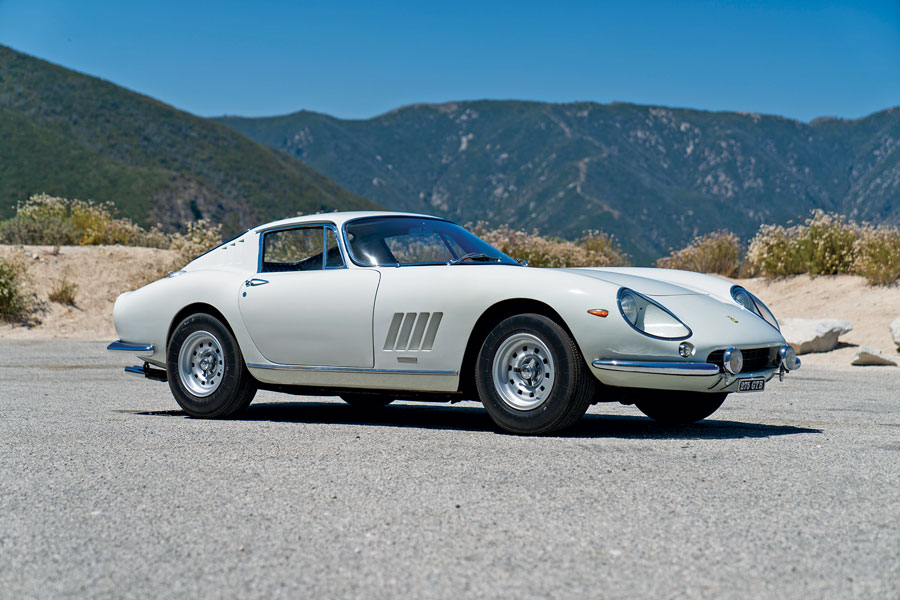Chassis Number: 08921
One of the very last 2-cam 275 GTBs built, just eight cars from the end of production, 08921 was factory-equipped with the improved torque-tube driveshaft and specified with the optional high-performance six-carburetor (6C) intake. In all, fewer than 40 cars were originally supplied with both of these desirable features.
Perhaps the most notable aspect of 08921 is its coachwork. This car’s long-nose body, numbered 0452, was factory-equipped with an extremely rare competition-style external fuel-filler cap, confirmed by the notation “tappo carico carburante esterno” written on Ferrari’s internal foglio allestimenti. Further contributing to this 275’s distinctive appearance is its attractive, singular color scheme of Bianco (White) over beige, full leather upholstery.

